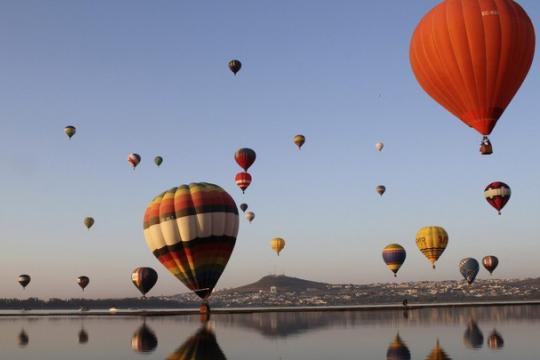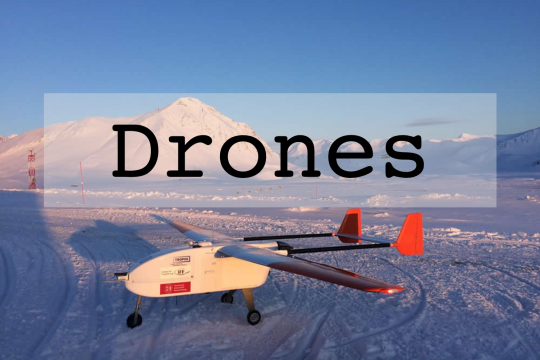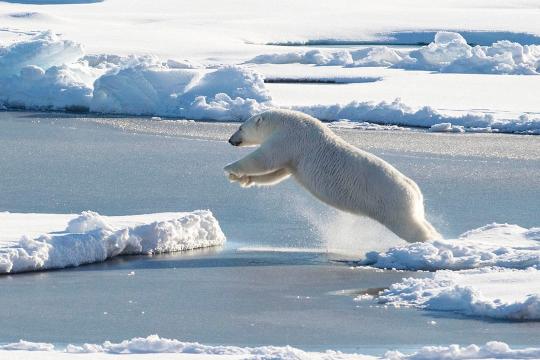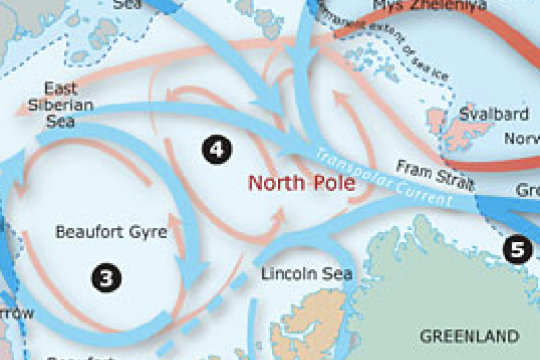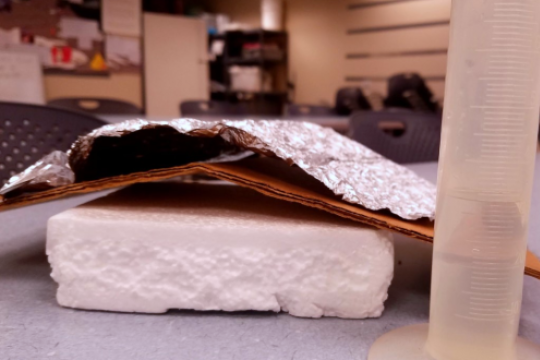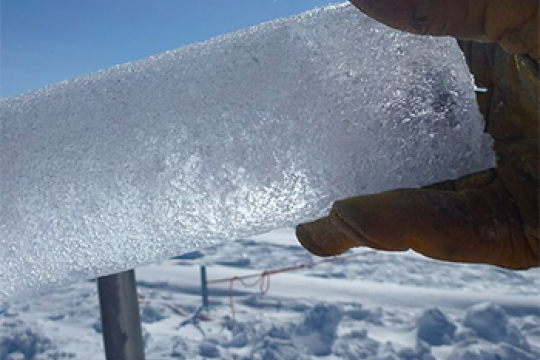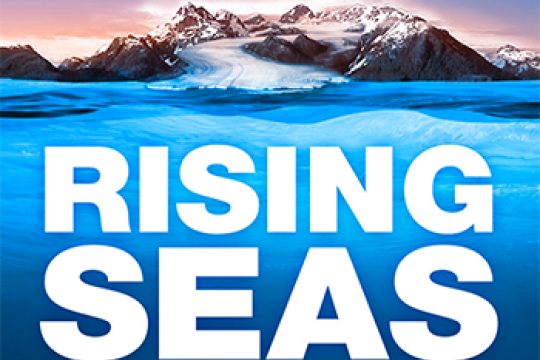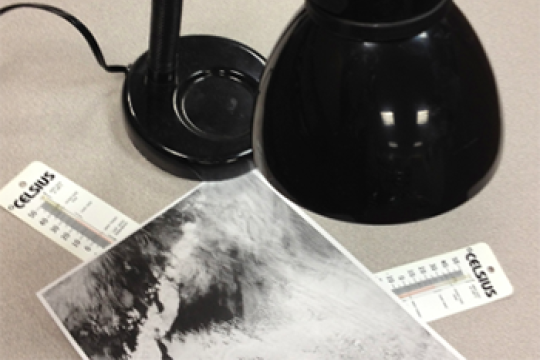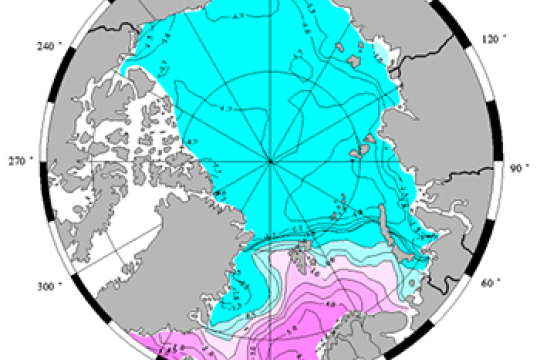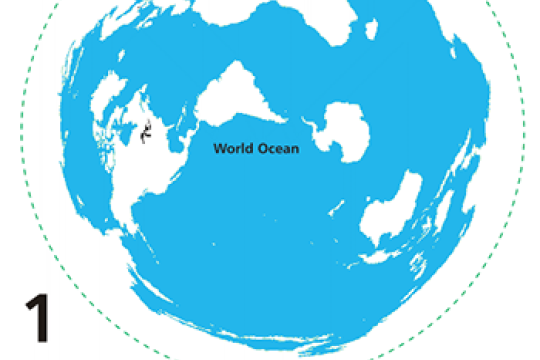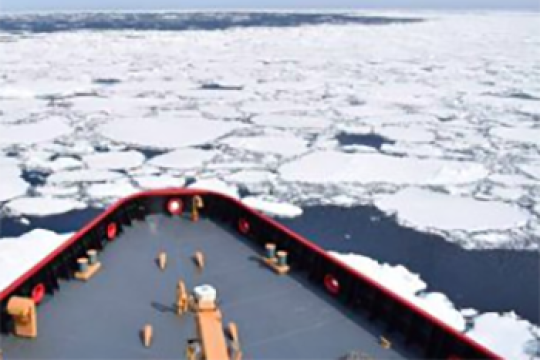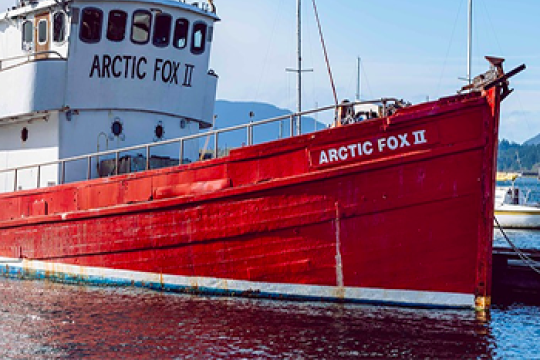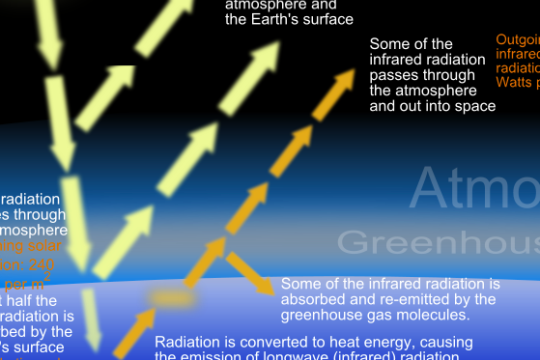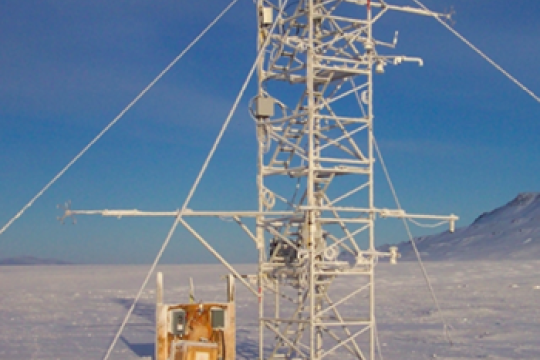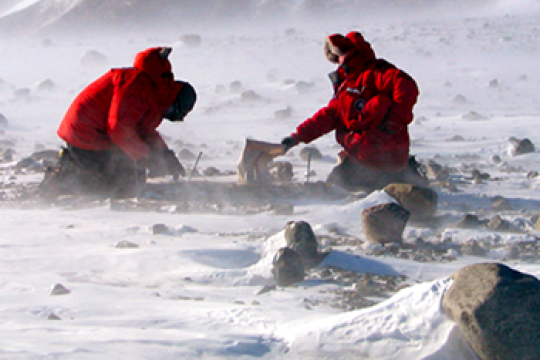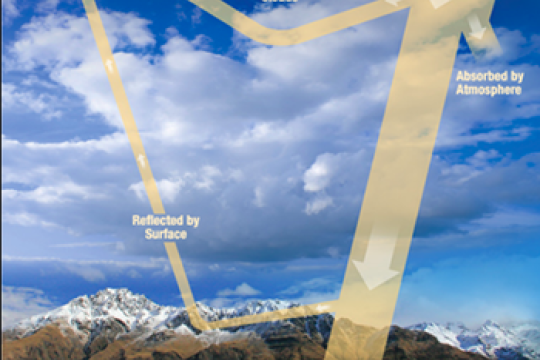Physical science
Quick Bite: Pondering Pressure
What is air pressure? Explore this and more using a PhET simulation in this Quick Bite activity. Photo credit: Mario Armas/Reuters
Quick bite
Subject: Constructing explanations, Developing and using models, mosaic monday, Physical science
Grade Level: Middle School, High School
Developer: CIRES
What is air pressure? Explore this and more using a PhET simulation in this Quick Bite activity. Photo credit: Mario Armas/Reuters
Quick bite
Subject: Constructing explanations, Developing and using models, mosaic monday, Physical science
Grade Level: Middle School, High School
Developer: CIRES
Quick Bite: How did MOSAiC scientists study the Arctic atmosphere?
Learn about the various instruments scientists used to study the atmosphere during the 2019-2020 MOSAiC expedition in this Quick Bite activity.
Project of Mosaic Quick bite
Subject: Atmosphere, Earth science, Engineering and technology, Expeditions, mosaic monday, Physical science
Grade Level: Middle School, High School
Developer: CIRES
Learn about the various instruments scientists used to study the atmosphere during the 2019-2020 MOSAiC expedition in this Quick Bite activity.
Project of Mosaic Quick bite
Subject: Atmosphere, Earth science, Engineering and technology, Expeditions, mosaic monday, Physical science
Grade Level: Middle School, High School
Developer: CIRES
Know Your Ocean: Polar Research
Learn more about polar topics like glaciers and ice sheets, Arctic sea life, and sea ice in these polar research educational modules from the Woods Hole Oceanographic Institution.
Subject: Earth science, Ecosystems, Geography, Life science, Obtaining and evaluating information, Oceans and ocean circulation, Physical science, Sea ice
Grade Level: Middle School, High School, University/college, Adult
Learn more about polar topics like glaciers and ice sheets, Arctic sea life, and sea ice in these polar research educational modules from the Woods Hole Oceanographic Institution.
Subject: Earth science, Ecosystems, Geography, Life science, Obtaining and evaluating information, Oceans and ocean circulation, Physical science, Sea ice
Grade Level: Middle School, High School, University/college, Adult
Polar Discovery: Arctic Ocean Circulation
The Arctic Ocean is a unique part of the globe, covered by ice much of the year and fairly isolated from the other oceans. Learn about how water in the Arctic Ocean moves around and why using this interactive graphic from the Woods Hole Oceanographic Institution.
Data visualization
Subject: Earth science, Geography, Obtaining and evaluating information, Oceans and ocean circulation, Physical science
Grade Level: Middle School, High School, University/college, Adult
The Arctic Ocean is a unique part of the globe, covered by ice much of the year and fairly isolated from the other oceans. Learn about how water in the Arctic Ocean moves around and why using this interactive graphic from the Woods Hole Oceanographic Institution.
Data visualization
Subject: Earth science, Geography, Obtaining and evaluating information, Oceans and ocean circulation, Physical science
Grade Level: Middle School, High School, University/college, Adult
Keep it Cool
When you put on layers to stay warm in the winter, or use a cooler to keep food cool, have you ever wondered about the science of thermal energy transfer? Challenge your students to utilize their understanding of thermal energy transfer and transformation to develop a simple, lightweight, and efficient method for storing and transporting ice cores.
NGSS Aligned Lesson plan
Subject: Engineering and technology, Physical science
Grade Level: 3-5, Middle School
Developer: Byrd Polar and Climate Research Center
When you put on layers to stay warm in the winter, or use a cooler to keep food cool, have you ever wondered about the science of thermal energy transfer? Challenge your students to utilize their understanding of thermal energy transfer and transformation to develop a simple, lightweight, and efficient method for storing and transporting ice cores.
NGSS Aligned Lesson plan
Subject: Engineering and technology, Physical science
Grade Level: 3-5, Middle School
Developer: Byrd Polar and Climate Research Center
Create Classroom Ice Cores
Students analyze two different ice core models (made of layers of ice frozen in pringles cans) to observe changes in past climates.
Lesson plan
Subject: Analyzing and interpreting data, Climate, Earth science, Engineering and technology, Physical science
Grade Level: Middle School, High School
Developer: Byrd Polar and Climate Research Center
Students analyze two different ice core models (made of layers of ice frozen in pringles cans) to observe changes in past climates.
Lesson plan
Subject: Analyzing and interpreting data, Climate, Earth science, Engineering and technology, Physical science
Grade Level: Middle School, High School
Developer: Byrd Polar and Climate Research Center
Land Ice/Sea Ice: How does melting ice affect sea level?
Students use a simple model to compare sea level rise due to melting land ice versus melting sea ice.
Lesson plan
Subject: Asking questions, Constructing explanations, Developing and using models, Physical science, Sea ice
Grade Level: Middle School
Developer: U.S. Ice Drilling Program
Students use a simple model to compare sea level rise due to melting land ice versus melting sea ice.
Lesson plan
Subject: Asking questions, Constructing explanations, Developing and using models, Physical science, Sea ice
Grade Level: Middle School
Developer: U.S. Ice Drilling Program
Sea Ice and Heat: A Vicious Cycle
Students explore the different heat absorption of ice and open water using a simple experimental set up.
Lesson plan
Subject: Developing and using models, Earth science, Physical science, Sea ice
Grade Level: Middle School, High School
Developer: UCAR, Center for Science Education
Students explore the different heat absorption of ice and open water using a simple experimental set up.
Lesson plan
Subject: Developing and using models, Earth science, Physical science, Sea ice
Grade Level: Middle School, High School
Developer: UCAR, Center for Science Education
Arctic Ocean Exploration: Current Events
Using authentic data and two hands on activities, students explore the driving forces for ocean currents, with a focus on the Arctic Ocean.
Lesson plan
Subject: Analyzing and interpreting data, Developing and using models, Earth science, Oceans and ocean circulation, Physical science, Sea ice
Grade Level: High School
Developer: NOAA
Using authentic data and two hands on activities, students explore the driving forces for ocean currents, with a focus on the Arctic Ocean.
Lesson plan
Subject: Analyzing and interpreting data, Developing and using models, Earth science, Oceans and ocean circulation, Physical science, Sea ice
Grade Level: High School
Developer: NOAA
One World Ocean
In this hands-on activity, students learn about ocean currents and the difference between salt and fresh water using colored ice cubes and glasses of fresh and salt water.
NGSS Aligned Lesson plan
Subject: Developing and using models, Earth science, Oceans and ocean circulation, Physical science
Grade Level: 3-5, Middle School
Developer: Teach Engineering
In this hands-on activity, students learn about ocean currents and the difference between salt and fresh water using colored ice cubes and glasses of fresh and salt water.
NGSS Aligned Lesson plan
Subject: Developing and using models, Earth science, Oceans and ocean circulation, Physical science
Grade Level: 3-5, Middle School
Developer: Teach Engineering
Arctic Climate Curriculum: Exploring the Arctic
This activity introduces students to the Arctic, including different definitions of the Arctic and exploration of the Arctic environment and Arctic people. Students set out on a virtual exploration of the geography of the Arctic using Google Earth. Students go on to learn about meteorological parameters that are measured by Arctic research teams and practice the measurements in hands-on activities.
Lesson plan
Subject: Analyzing and interpreting data, Arguing from evidence, Asking questions, Computational thinking, Earth science, Geography, Life science, Obtaining and evaluating information, Physical science, Planning investigations
Grade Level: Middle School, High School, University/college
Developer: CIRES
This activity introduces students to the Arctic, including different definitions of the Arctic and exploration of the Arctic environment and Arctic people. Students set out on a virtual exploration of the geography of the Arctic using Google Earth. Students go on to learn about meteorological parameters that are measured by Arctic research teams and practice the measurements in hands-on activities.
Lesson plan
Subject: Analyzing and interpreting data, Arguing from evidence, Asking questions, Computational thinking, Earth science, Geography, Life science, Obtaining and evaluating information, Physical science, Planning investigations
Grade Level: Middle School, High School, University/college
Developer: CIRES
Design and Build a Sea Ice Drifter
In an engineering design challenge, students learn about sea ice and sea ice observation technology to build and design their own sea ice drifter.
Project of Mosaic Lesson plan
Subject: Asking questions, Constructing explanations, Engineering and technology, Physical science, Sea ice
Grade Level: 3-5
Developer: SMILE Oregon State
In an engineering design challenge, students learn about sea ice and sea ice observation technology to build and design their own sea ice drifter.
Project of Mosaic Lesson plan
Subject: Asking questions, Constructing explanations, Engineering and technology, Physical science, Sea ice
Grade Level: 3-5
Developer: SMILE Oregon State
Atmosphere Layers & Greenhouse Effect Model Activity
Students learn how models are constructed and how they work using a gameboard activity to represent the layers of Earth’s atmosphere and the greenhouse effect.
Lesson plan
Subject: Atmosphere, Developing and using models, Physical science
Grade Level: Middle School, High School
Developer: UCAR, Center for Science Education
Students learn how models are constructed and how they work using a gameboard activity to represent the layers of Earth’s atmosphere and the greenhouse effect.
Lesson plan
Subject: Atmosphere, Developing and using models, Physical science
Grade Level: Middle School, High School
Developer: UCAR, Center for Science Education
Arctic Climate Curriculum: Exploring Arctic Climate Data
Students dig into authentic Arctic climate data to unravel some causes and effects related to the seasonal melting of the snowpack. In particular, students learn about albedo and its relationship to snowmelt. This concept applied to global climate change on a large scale as well, and students go on to learn about the role of albedo as a self-reinforcing feedback mechanism.
NGSS Aligned Lesson plan
Subject: Analyzing and interpreting data, Arguing from evidence, Climate, Computational thinking, Constructing explanations, Earth science, Physical science
Grade Level: Middle School, High School, University/college
Developer: CIRES
Students dig into authentic Arctic climate data to unravel some causes and effects related to the seasonal melting of the snowpack. In particular, students learn about albedo and its relationship to snowmelt. This concept applied to global climate change on a large scale as well, and students go on to learn about the role of albedo as a self-reinforcing feedback mechanism.
NGSS Aligned Lesson plan
Subject: Analyzing and interpreting data, Arguing from evidence, Climate, Computational thinking, Constructing explanations, Earth science, Physical science
Grade Level: Middle School, High School, University/college
Developer: CIRES
Arctic Climate Curriculum: Do you really want to visit the Arctic?
This jigsaw activity is designed for students to become familiar with several datasets of Arctic weather data, collected in Eureka on Ellesmere Island. Students join a role-playing activity to read and interpret graphs while considering the optimal time to plan a research mission to the Arctic.
NGSS Aligned Lesson plan
Subject: Analyzing and interpreting data, Arguing from evidence, Asking questions, Climate, Computational thinking, Constructing explanations, Earth science, Obtaining and evaluating information, Physical science
Grade Level: Middle School, High School, University/college
Developer: CIRES
This jigsaw activity is designed for students to become familiar with several datasets of Arctic weather data, collected in Eureka on Ellesmere Island. Students join a role-playing activity to read and interpret graphs while considering the optimal time to plan a research mission to the Arctic.
NGSS Aligned Lesson plan
Subject: Analyzing and interpreting data, Arguing from evidence, Asking questions, Climate, Computational thinking, Constructing explanations, Earth science, Obtaining and evaluating information, Physical science
Grade Level: Middle School, High School, University/college
Developer: CIRES
Albedo: measuring the reflective properties of different surfaces
Students measure the albedo and surface temperature of various ice surfaces and changing processes as the ice melts over time. Students apply what they’ve learned in the experiment to the understanding of albedo, and the role albedo plays in the Earth’s energy budget.
NGSS Aligned Lesson plan
Subject: Analyzing and interpreting data, Asking questions, Developing and using models, Earth science, Obtaining and evaluating information, Physical science, Planning investigations, Sea ice
Grade Level: Middle School, High School, University/college
Developer: U.S. Ice Drilling Program
Students measure the albedo and surface temperature of various ice surfaces and changing processes as the ice melts over time. Students apply what they’ve learned in the experiment to the understanding of albedo, and the role albedo plays in the Earth’s energy budget.
NGSS Aligned Lesson plan
Subject: Analyzing and interpreting data, Asking questions, Developing and using models, Earth science, Obtaining and evaluating information, Physical science, Planning investigations, Sea ice
Grade Level: Middle School, High School, University/college
Developer: U.S. Ice Drilling Program
